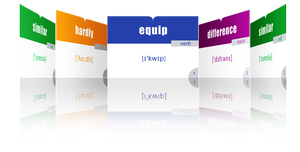Описане крокодила на английском языке
- Подробности
- 454
На этой странице представлено краткое описание крокодила на английском языке. Двойной клик по слову откроет его перевод и озвучку. Ключевые слова можно закрепить в тренажёре в конце страницы. Работа со словами задействует моторную память и помогает лучше из запоминать. К каждому разделу добавлен аудиофайл в формате MP3 для более глубокого разбора и развития навыков аудирования.
КРОКОДИЛ

Vocabulary:
| № | Английский | Транскрипция | Русский |
|---|---|---|---|
| 1 | scaly | [ˈskeɪli] | чешуйчатый |
| 2 | armored | [ˈɑːməd] | бронированный |
| 3 | long-tailed | [ˌlɒŋ ˈteɪld] | длиннохвостый |
| 4 | cold-blooded | [ˌkəʊld ˈblʌdɪd] | хладнокровный |
| 5 | predatory | [ˈpredətəri] | хищный |
| 6 | stealthy | [ˈstelθi] | скрытный |
| 7 | powerful | [ˈpaʊəfʊl] | мощный |
| 8 | semi-aquatic | [ˌsemɪ əˈkwætɪk] | полуводный |
ПОТРЕНИРУЙТЕ СЛОВА
Краткое описание крокодила
Look at the picture. You can see a crocodile lying near the water. Its body is long and flat with tough scales. It has a broad snout and powerful jaws. There are 2 small eyes and 2 nostrils on top of the head. A thin membrane covers its eyes under water. Sharp teeth stick out even when the mouth is closed. Short legs end with strong claws; the back feet are partly webbed. A long muscular tail helps it swim and turn quickly. Its dark skin looks like armor. The animal seems quiet but ready to attack.
LISTEN TO THE TEXT
15 Интересных фактов о крокодиле
Crocodiles are large aquatic reptiles and skilled predators found in the tropics of Africa, Asia, the Americas, and Australia. Big species like the saltwater and Nile crocodiles can reach a length of 4–7 m and a weight over 1,000 kg. Their bite is among the strongest in the animal world and holds prey with great force. The body is armored with bony osteoderms (hard scutes) that protect and store heat.
Eyes, ears, and nostrils sit on top of the head so the crocodile can hide almost completely under water. A clear nictitating membrane protects the eyes while swimming, and a special palatal valve keeps water out of the throat. They can stay under water for about 30 minutes (much longer when resting).
Crocodiles are ectothermic and bask in the sun to warm up; when overheated they open the mouth to cool—this is called gaping. They swim with the tail and can sprint on land for short bursts at around 15–20 km/hr.
Their teeth (usually 60–80) are conical and are replaced many times during life. Young make calls from the egg; mothers gently carry hatchlings in the mouth and guard the nest. Nest temperature helps determine the sex of the babies.
Crocodiles hunt by quiet ambush, grabbing fish, birds, or mammals at the water’s edge. They can live decades; many species reach a lifespan of 50–70 years, and some individuals may exceed that. Main threats are habitat loss and illegal hunting, though protection has helped several populations recover.
LISTEN TO THE TEXT



